Mastering for Dance Music
Quick Answer
Mastering for Dance Music is a process that prepares dance music for distribution while making it pronounced and detailed enough to be enjoyed on consumer-grade equipment. If performed correctly, mastering for dance music often includes louder levels that still retain transient detail and dynamic impact.
Mastering for Dance Music in Detail

Dance music, no matter the form it takes, has always been a popular genre.
Dance music has always been a popular genre. No matter the format it takes or the style that’s associated with it, music lovers of any era want music they can dance to.
This makes dance music one of the most commonly played genres. That said, dance music needs to be mastered well and mastered with consumer-grade equipment in mind.
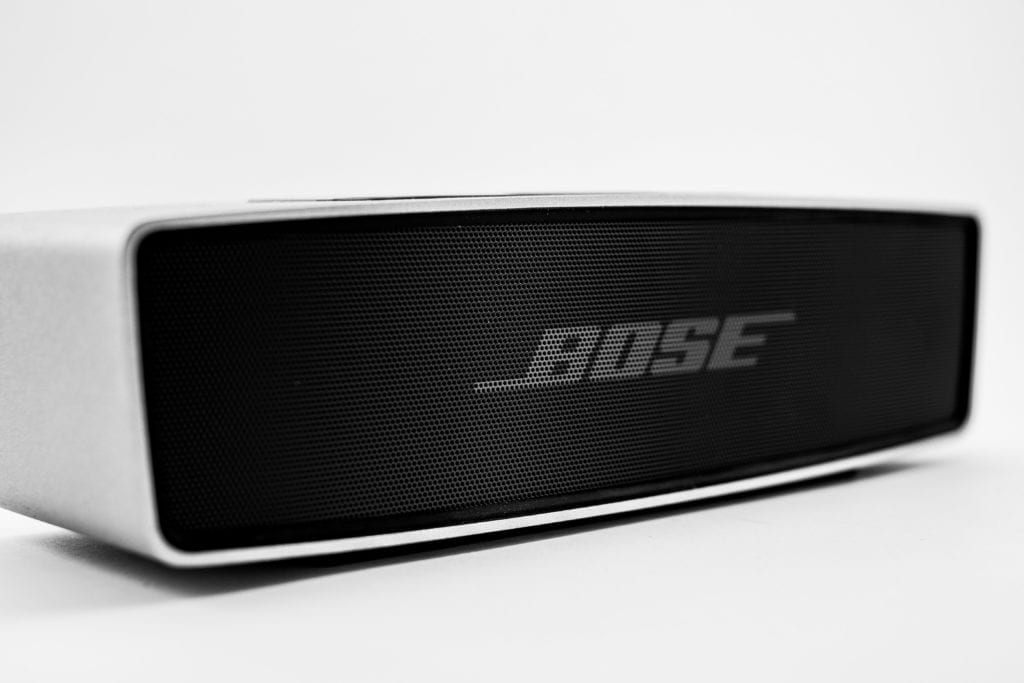
Dance music is often played over consumer-grade equipment, making the master's translation to those devices very important.
Although all genres are mastered with this in mind, this needs to be taken into special consideration when mastering dance music. Odds are dance music will be played over headphones, portable BlueTooth speakers, or any other consumer-grade equipment more often than not.
For this reason, dance music needs to be mastered loud enough to sound impressive no matter the playback system.
For mastering engineers this can present a bit of a challenge, as balancing transient retention with louder levels isn’t always the easiest thing to accomplish.
With that in mind, let's explore how to master dance music and the technical aspects of which its comprised - including the LUFS of dance music, the frequency response of dance music, and some of the compression techniques used during dance music mastering.
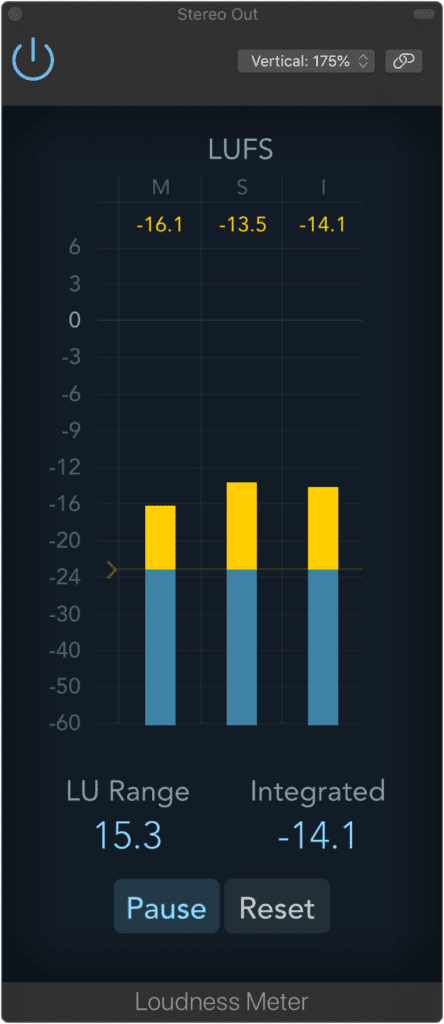
The LUFS range of dance music is wide and depends on the type of dance music being mastered.
Also, we’ll consider some great sounding references you can use when mastering your dance music.
Additionally, we’ll discuss whether analog mastering or digital mastering is better suited for mastering dance music , and the reasons for why this is.
Lastly, we’ll discuss how the most common forms of dance music distribution are affecting the playback of dance music masters.
If you’ve been mastering your tracks, but want to hear an outside interpretation of your mix, send it to us here:
We’ll Master it for you and send you a free mastered sample for you to review.
How to Master Dance Music
Mastering dance music is accomplished by using low-level or upward compression, mid-side equalization, harmonic generation, and saturation, and significant but controlled limiting. The goal of a dance master is to have an impact and to translate well to any and all consumer-grade playback systems.
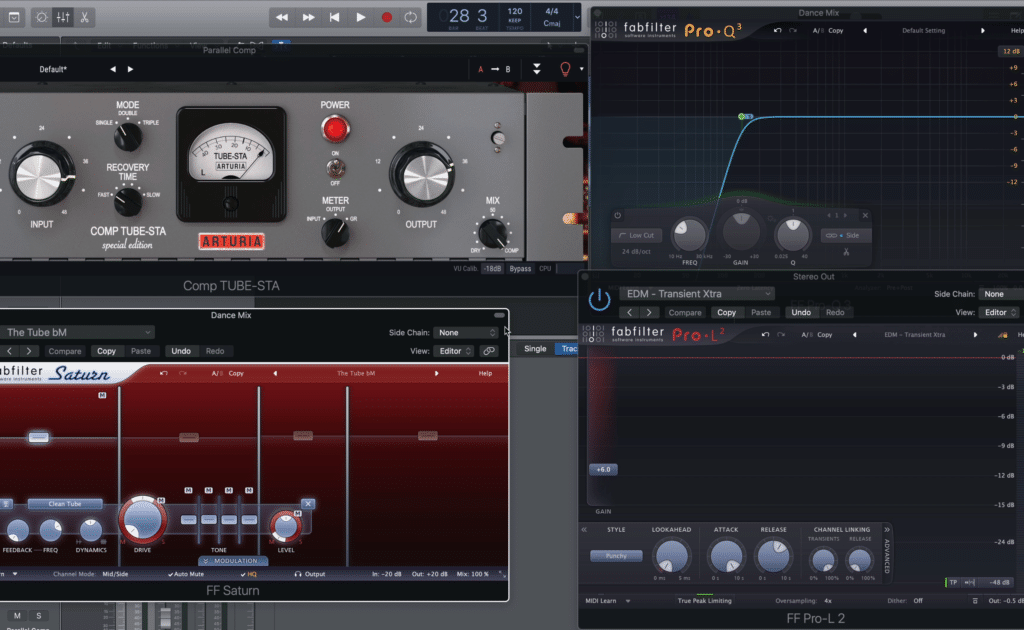
Mastering dance music includes but isn't limited to low-level compression, mid-side equalization, saturation or harmonic distortion, and aggressive limiting.
So let’s break this down a little farther and start by looking into low-level compression and how it's accomplished.
How to Apply Low-Level Compression for a Dance Master
Essentially, low-level compression is the act of compressing a signal not to control dynamics, but to augment and accentuate quieter aspects of a signal, in turn making them more perceivable to the listener. This effect can be used when mastering dance music to create a more compelling master.
Accomplishing low-level compression results in a more detailed master , one that translates better to multiple speaker systems, and is in turn, more enjoyable for listeners.
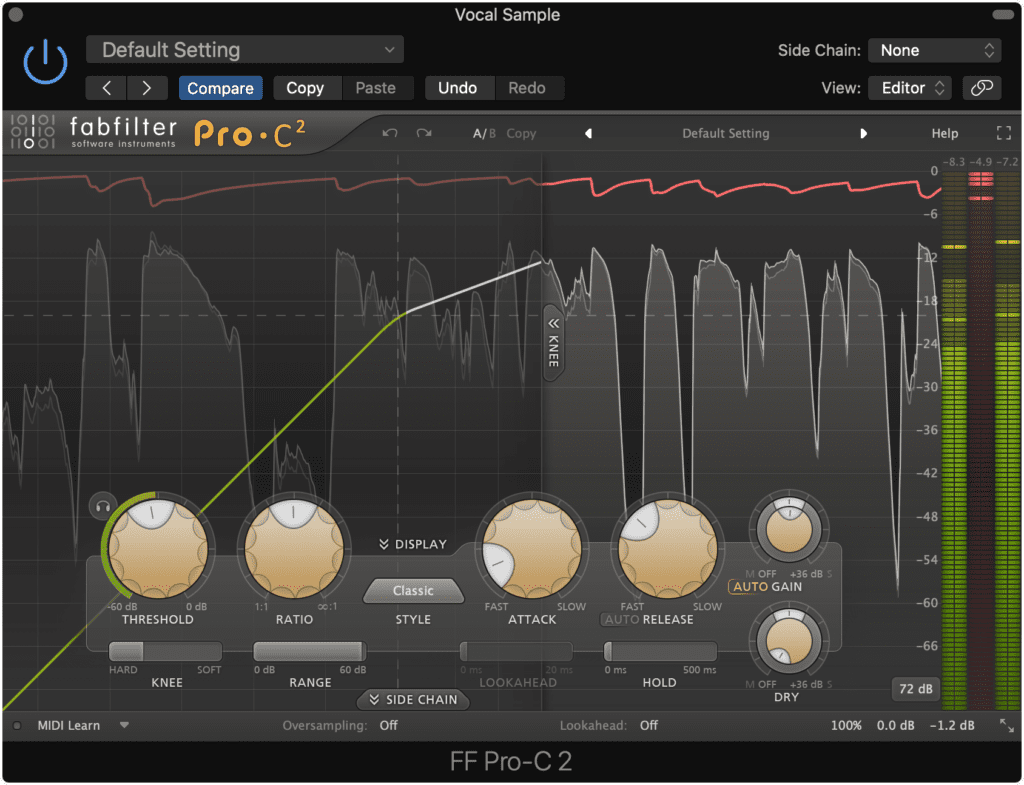
Low-level compression typically occurs during any compression but can be made more pronounced with additional techniques.
Low-level compression can be accomplished in a couple of ways. The first is to use a low-level compression plugin.
One example of this type of compressor is the Waves MV2. It captures quieter signals and expands to make them more perceivable.
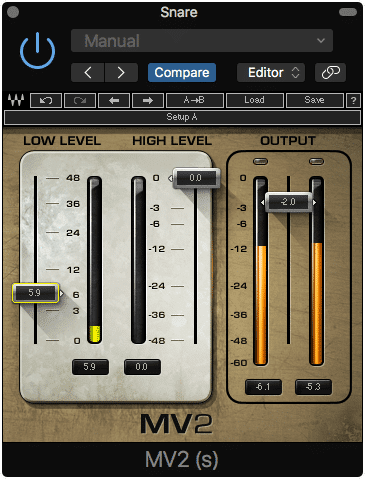
The MV2 is a useful low-level compression plugin.
If you have the MV2 or simply want to know more about it, check out our video made specifically to showcase how the MV2 can be used:
A somewhat similar plugin is Softube’s transient shaper. This plugin’s sustain function creates a similar effect by increasing the amplitude of quieter parts of a recording.
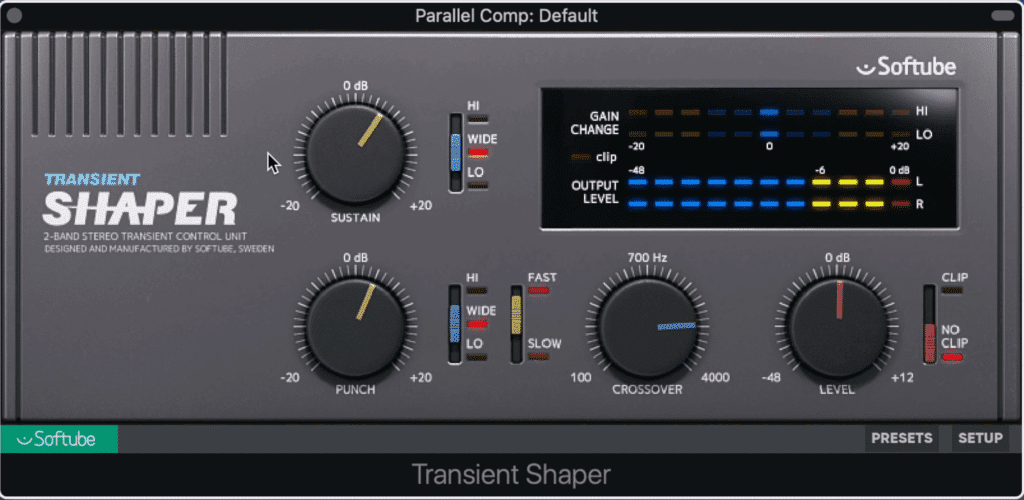
Transient shapers can have a similar effect.
If you don’t want to purchase a plugin designed specifically for low-level compression, you can also accomplish low-level compression with a parallel compression technique.
To accomplish this, send your signal to an auxiliary track using a bus send and significantly compress the signal sent to this auxiliary track.

Choose the compressor you use for parallel compression wisely. You want something with a quick enough release, but a distinct and colorful sound.
It helps to use a plugin that models itself off of a piece of hardware - this way you can also introduce some character to your signal with a little harmonic generation and stereo shaping (depending on how the plugin affects the signal).
If you want to learn more about this technique, check out our blog post and video that shows this and other compression techniques in greater detail:
How to Apply Mid-Side Equalization for a Dance Master
Mid-side equalization can be applied when mastering dance music to both amplify and attenuate aspects of the signal you want to affect, and to widen or narrow aspects of the stereo signal. Considering dance music utilizes a wider stereo image, mid-side equalization is an incredibly useful tool.
When using mid-side equalization , one of the quickest ways to affect your stereo image in a positive way is to create a high-pass filter on your side image and move it a little higher than 100Hz, and then to create a shelf filter on the side image above 7kHz.
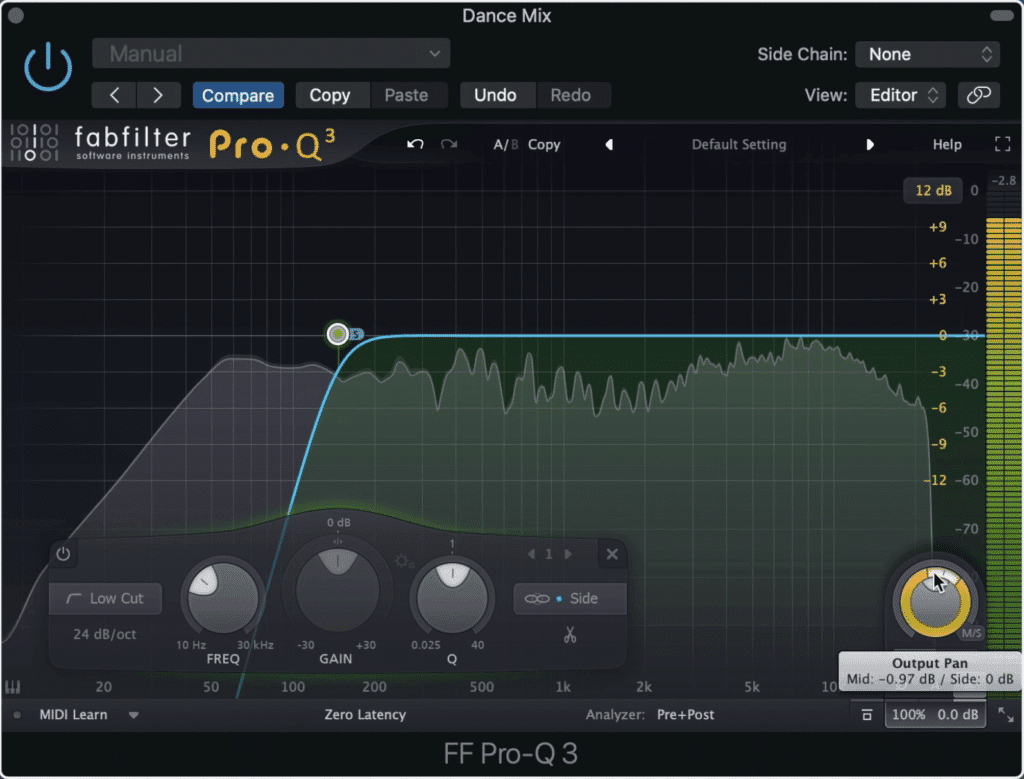
Mid-Side equalizers allow you to equalize and perform stereo imaging simultaneously.
By accomplishing these two very simple steps, you effectively make your low-end mono and increase the high-frequency range’s stereo width. This is great for dance music as it focuses your kick and bass while making the stereo image of your master more impressive.

Amplifying the side image increases the stereo width of your dance music master.
If your dance track has vocals you can also attenuate roughly 1.8kHz to 2.5kHz on the side image with a bell filter. This way the vocals on the mid-channel are canceled or masked by any signal on the side image.
In turn, your vocals will become more prominent.
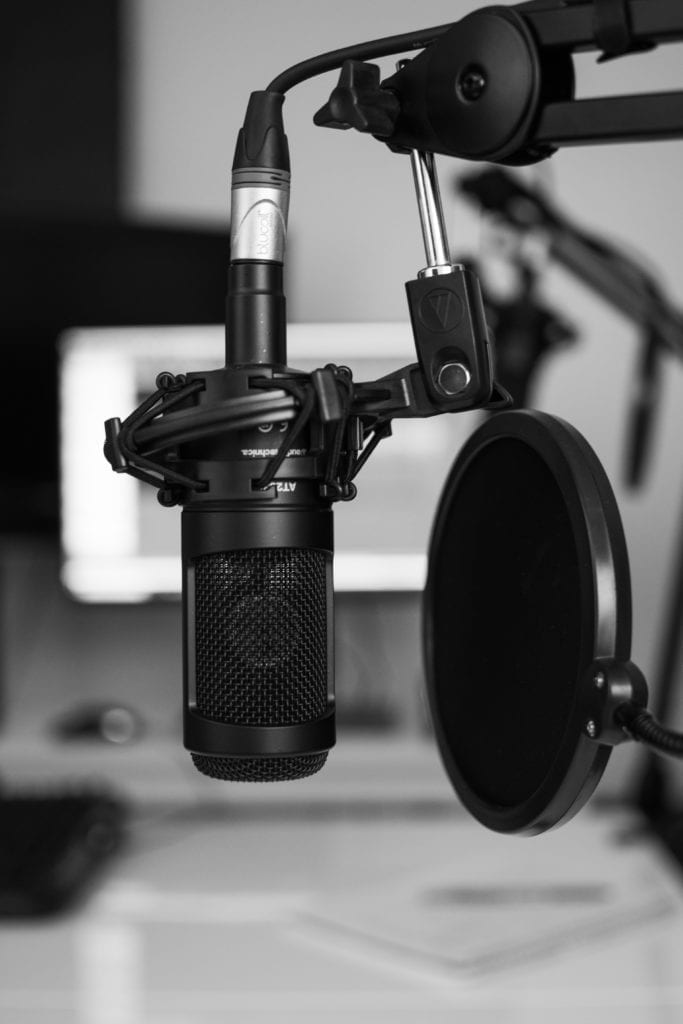
Cutting 2kHz of the side image will make your mono vocals more prominent.
Because dance music often sports a louder kick and more crisp and prominent high end, it may be helpful to amplify some of these frequencies on the mid-channel as well - but this will really depend on the mix , so take the current frequency response into consideration before making this decision.
How to Apply Distortion for a Dance Master
Distortion in the form of harmonic generation is often applied to a dance music master to make the master sound full and more forward in terms of depth. Harmonic distortion makes a master sound more complex and sonically pleasing and can establish impact during dynamic transitions.

Harmonic distortion occurs naturally in an electrical analog set-up.
Harmonic distortion is easy to apply when mastering. If you’re creating a master using analog equipment than these distortions are created automatically by the hardware itself.
If you’re mastering using a digital setup, then you can introduce these harmonics by uses analog emulation plugins. Be it tape, tube, transistor, or vinyl record emulation, harmonics will be added to your signal, making it more complex.
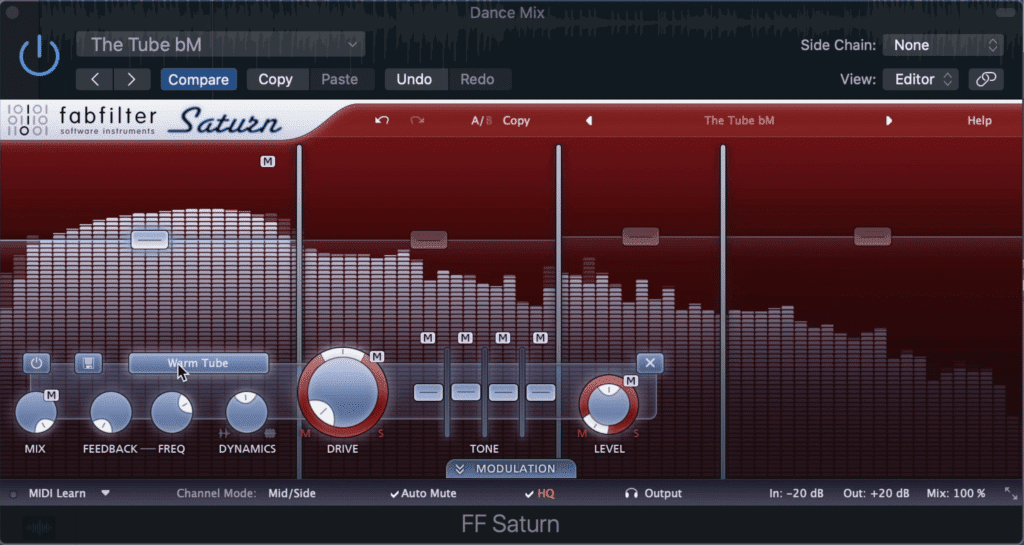
Analog emulation plugins can create distortion in the digital domain.
When using harmonic distortion on a dance master, you can be a bit more liberal with your application of it - in other words, dance music can contain more distortion before it becomes overbearing or distracting.
That said, it’s still important to keep distortion within a reasonable level and to avoid excessive or superfluous harmonic generation.
If you’d like to learn more about harmonic generation as it relates to analog equipment, check out our blog post on saturation:
It discusses what saturation is, and how it can be applied during both mixing and mastering.
How Loud Should a Dance Master Be?
The loudness of a dance master can be measured using an integrated LUFS meter and should range from -14 LUFS on the quieter side, to -8 LUFS on the louder side. Most dance masters are created with significant limiting and are closer to an integrated -8 LUFS.
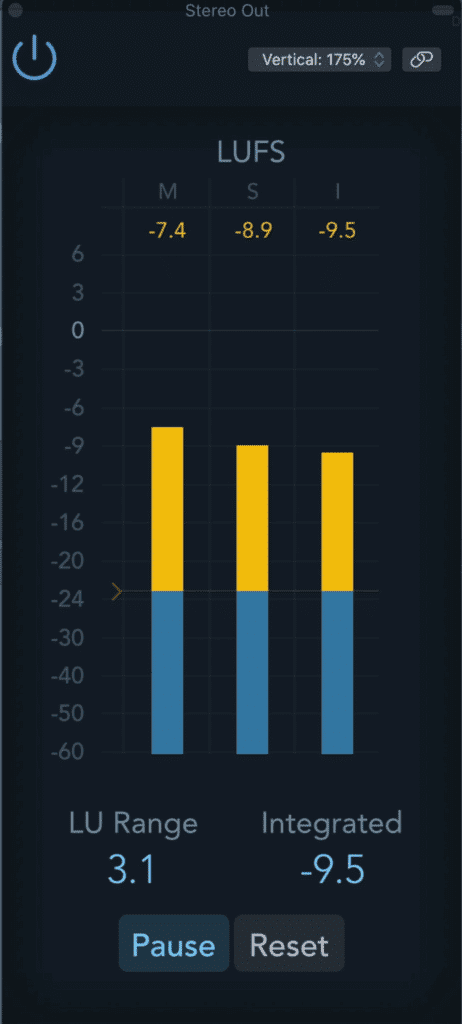
Dance music masters should range from an integrated -14 LUFS to -8 LUFS
This will vary of course and is entirely dependent on your personal preference, as well as how much you want your dance master to be similar to other dance masters.
Considering most dance masters are made loud, it may be in your best interest to master your track on the louder side if you want to create a competitive master.
As stated earlier, although dance masters are made loud, they need to retain their transient detail and impact during playback. The easiest way to accomplish this is to use a limiter that emphasizes transient detail.
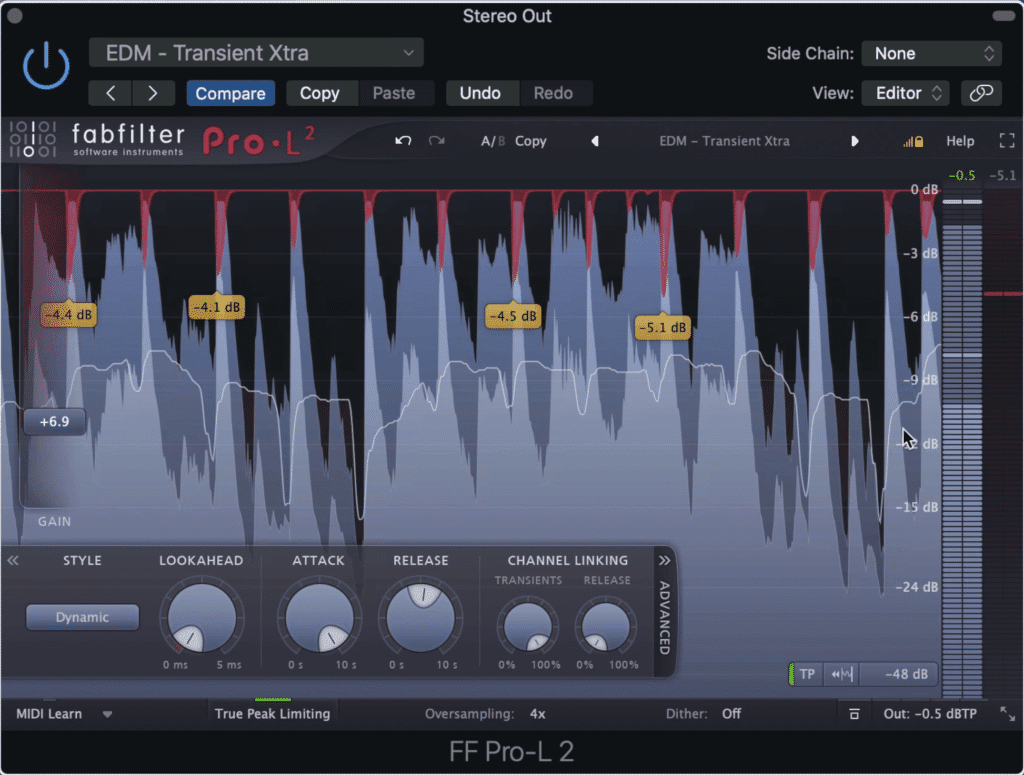
More intense limiting can be used during a dance music master. Be sure to use a limiter with advanced functionality.
One example of this the FabFilter Pro-L and Pro-L2 . This limiter’s transient emphasis can help to restore the impact and transient detail lost from heavy compression.
Additionally, it helps to use a limiter that offers attack and release settings. This way you can create a longer attack and shorter release setting to allow your transient to pass through your limiter unaffected.

The settings shown above are set for a more transient master.
For this reason, limiters like the Waves L1 and L2 are not the best options when mastering dance music.
It should be noted that significant limiting is mainly used to accomplish low-level compression, similar to what was detailed earlier. By truncating transients and amplifying the entire signal, you push lower aspects of the signal into a more perceivable territory.
As stated earlier, this can be accomplished by other means if desired.
Also, if your plan on using significant limiting, it’s best to set the output of your limiter to -0.5dB at the highest. This will protect your master from unwanted clipping distortion both during playback and the encoding process if uploaded or distributed digitally.
If you’d like to learn more about mastering within a digital domain in a step-by-step way, check out our blog post on that topic:
Or if you’d like to hear your mix professionally mastered with all analog equipment, send it to us here:
Good References for Mastering Dance Music
Although dance music is a truly complex genre, it can, perhaps crudely, be broken down into two distinct camps.
That is hi-fi dance music , which is the majority of popular dance music and is predicated on clear transients and a forward sound.
And lo-fi dance music , which is typically more of an underground genre, which utilizes a more muddled sound for dramatic effect or to create a specific mood.
With those two distinctions in mind, here are two tracks that you can reference, each being great examples of and references for their specific subsections of modern dance music.
Hi-Fi Dance Master - ‘Roses (Imanbek Remix)’ by SAINt JHN

‘Roses (Imanbek Remix)’ by SAINt JHN
This dance remix of the rap/r&b track ‘Roses’ has gained a fair deal of popularity this year. The master is clean, powerful and loud. The low-frequency range is clear and distinct, yet a dominant and driving force.
The high-frequency range is crisp and present, all while contributing to the stereo image of the track.
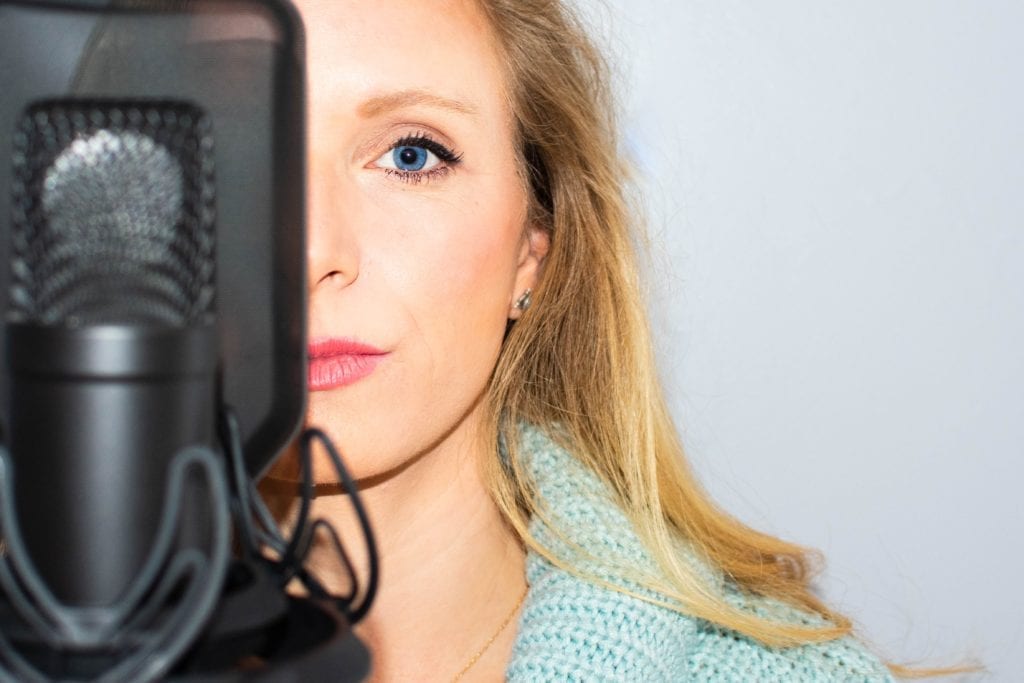
The vocals sit on top of the instrumentation.
Lastly, the vocals sit comfortably in the mix , allowing the instrumentation to do its work yet still allows floating on top of the master.
If you’re looking to master a pop-dance track than this is a great reference.
Lo-Fi Dance Master - ‘Archangel’ by Burial

‘Archangel’ by Burial
The atmospheric and moody dance track ‘Archangel’ by Burial utilizes a darken tone and truncated frequency response to emphasize the emotional context of the music.
The high-frequency range feels empty except for moments of ambient noise that add a psychoacoustic sense of stereo imaging.
The vocals bend in and out of focus evoking a sense of ambiguity while the kick and bass remain consistent and driving.
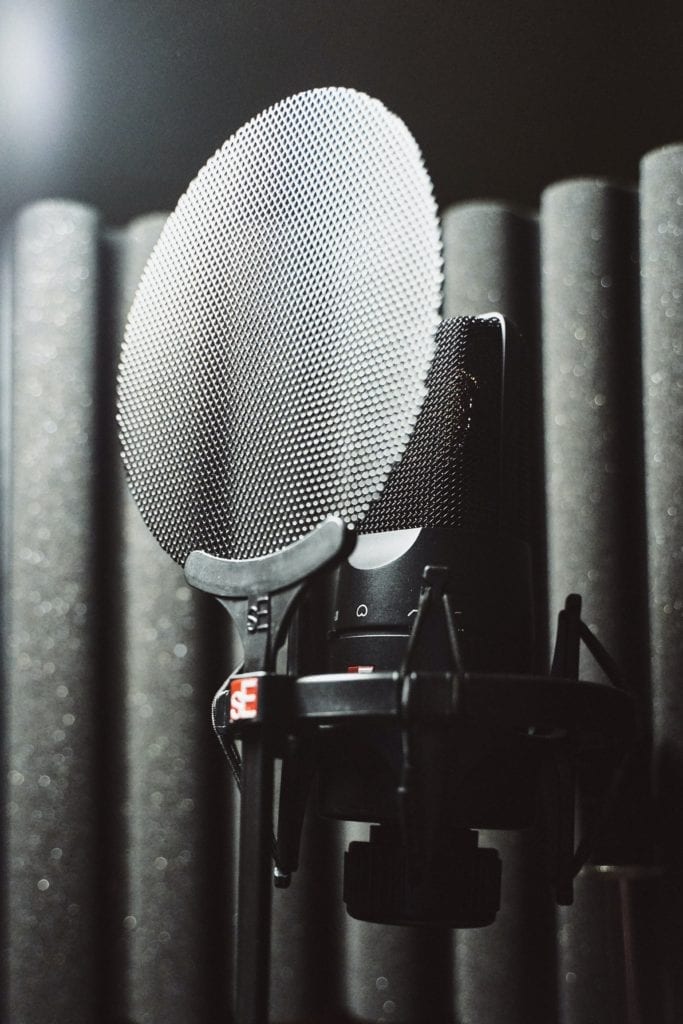
The vocals blend in and out of focus in this mix and master.
If your dance music aligns more with this type of stylized and artistic dance music, then ‘Archangel’ by Burial is a useful reference with which to compare your master.
How Streaming Changes Dance Music Masters
Streaming services alter the playback of dance music masters through a process referred to as Loudness Normalization. Loudness Normalization changes the loudness of a master prior to it being played back over a streaming service, in turn affecting the dynamic range and perceived loudness of the master.

Streaming services use loudness normalization to affect the perceived loudness of music being streamed.
It should be noted though that not all streaming services do this. Although YouTube, Spotify, Apple Music, Tidal, and others use loudness normalization, SoundCloud and Bandcamp seem to be some of the outliers that won’t conform to the new standard.
As for the services that do employ loudness normalization, the average loudness they normalize to is -14 LUFS . This varies slightly from service to service, but -14 LUFS is a decent reference or target for online mastering.

Loudness normalization will vary from service to service.
Despite this new development, most dance masters have not changed in terms of how loud they’re mastered.
How loud you want to master your dance track is entirely up to you - just know that loudness normalization will alter how it’s perceived when streamed from most streaming services.
What’s Better for Dance Music Mastering, Analog or Digital?
Although both forms of processing have their benefits when mastering, dance music is typically mastered using solely digital processing. The reason being, digital processing allows for quick compressor release times and distortion-free processing, resulting in greater transient retention and a clearer, more transparent sound.

Digital mastering is typically sued for dance music, but both analog and digital processing has its advantages.
With this in mind, most pop dance tracks are created using digital processing. Considering analog equipment typically results in a smoother, or less transient laden sound, digital mastering is often the go-to choice for most dance masters.
With that in mind, analog mastering does still have a place in dance music mastering. Although the processing used cannot react to signal changes as quickly as digital, most analog equipment still works quickly enough to preserve transient detail.
Additionally, analog processing imparts subtle harmonic generation and minute changes in width and depth. These changes are sonically pleasing regardless of the genre being mastered.
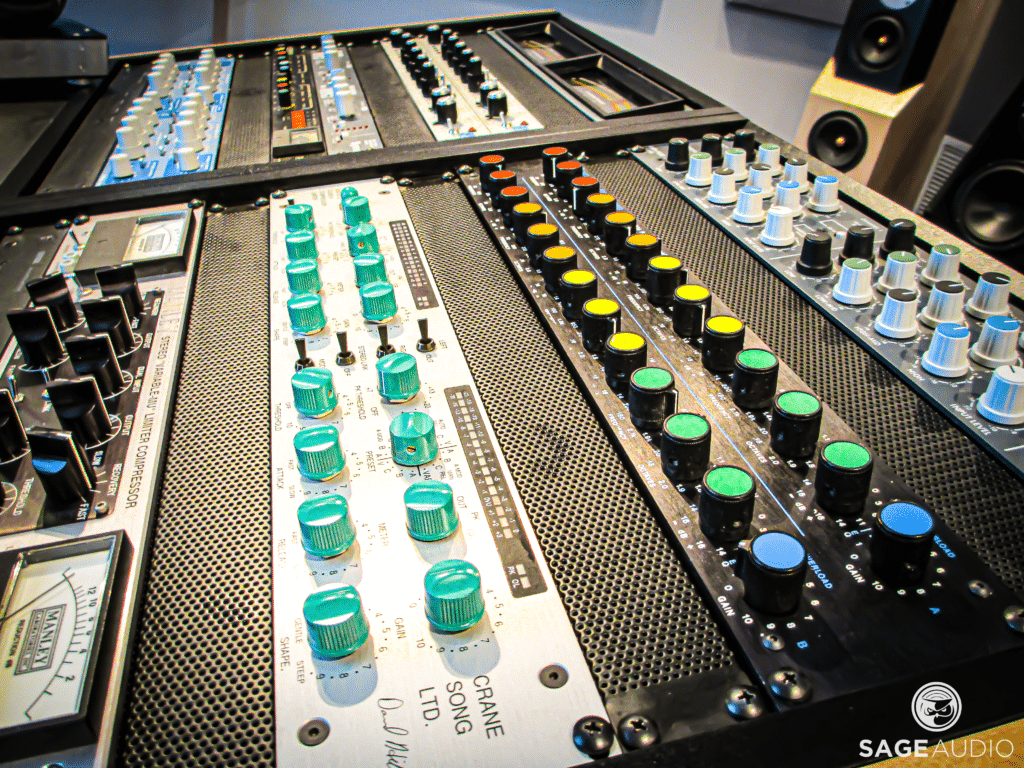
Analog equipment affects the signal in a complex and sonically pleasing way.
Lastly, analog mastering is better suited for lo-fi dance tracks than digital. The reason being, analog is better suited for creating a more sonically complex and somewhat colored sound.
With that said, if you’re looking to create a dance track that has a little more warmth, a more complex frequency response, and has authentic electronic saturation, then analog mastering is the better choice for your dance track.
If you’d like to learn more about analog mastering and digital mastering, check out our blog post on the topic:
It delves into the differences between the two forms of processing and the possible benefits and drawbacks of each. If you’re considering having your music mastered, or mastering music yourself, it’s full of helpful information.
Conclusion
Mastering dance music is an often rewarding process; considering dance music is all about impact and the ability to evoke uninhibited expression from listeners , hearing the finished version of a dance track has that same effect.
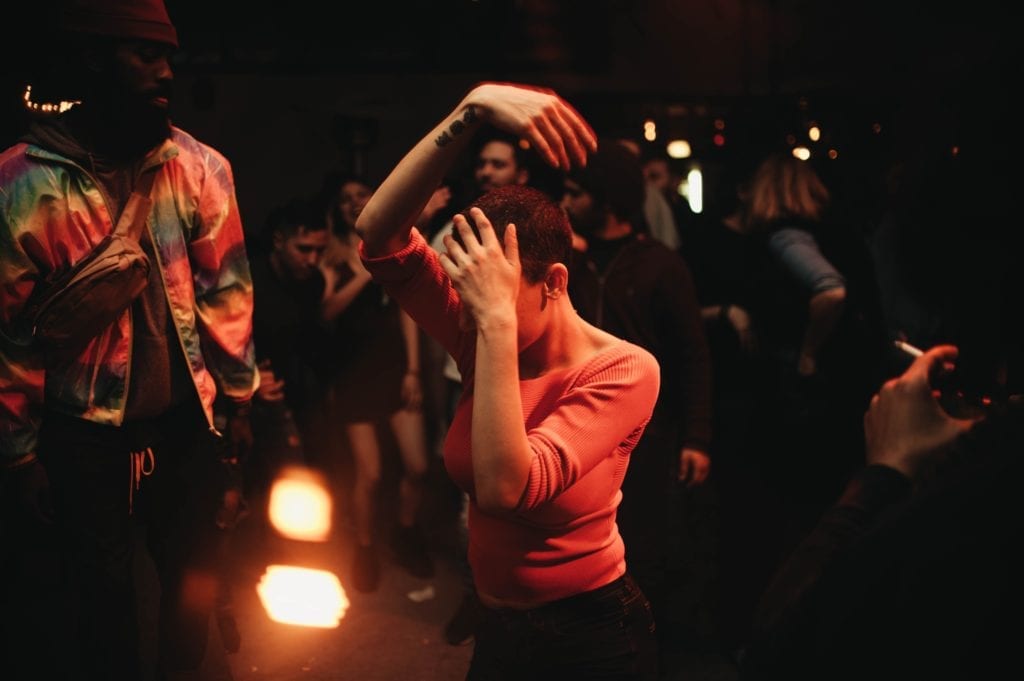
When a dance master is performed right, the music should create an uninhibited sense in the listener.
But this effect can only be reached with a proper master - one that makes the music upfront, clear, defined, and powerful. That’s why it’s important to have your dance music mastered by someone who is prepared to do so or to master it properly yourself.
Some of the tips and techniques listed above can help you achieve this effect.
If you’d like to hear your dance mix mastered professionally, send it to us here:
We’ll master it for you and send you a sample for you to review.
Have you ever mastered a dance track before?




